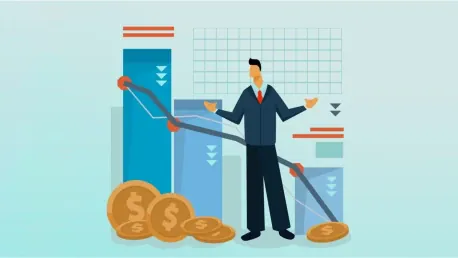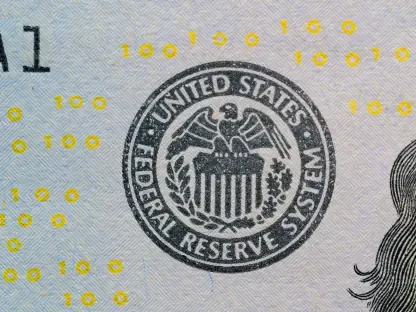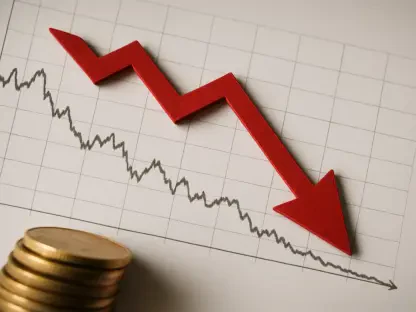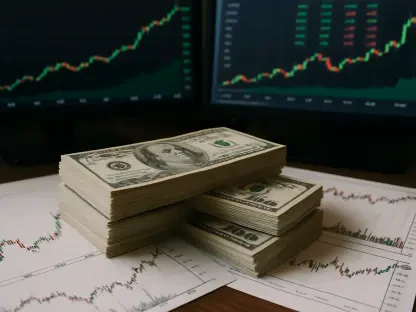As concerns about a potential recession in the United States grow in 2025, economists and market analysts point to a troubling mix of inflation, high interest rates, and shifting economic policies as key drivers. Recent policy changes, particularly under President Trump, which include significant spending cuts and extensive tariffs, are intensifying fears regarding the nation’s economic stability. According to the latest figures from Polymarket, the probability of a recession has increased significantly from 23% in late February to 32% as of last Thursday.
Inflation and Interest Rates: The Double-Edged Sword
The Impact of Rising Inflation
Inflation continues to be a significant concern for the U.S. economy, as it erodes consumers’ purchasing power and increases the cost of living. This phenomenon affects not only households but also businesses that struggle to cope with higher input costs, ultimately leading to reduced profitability. As prices continue to soar, consumers may delay discretionary spending, further stifling economic growth. The Federal Reserve’s response to tackle inflation has been to increase interest rates, effectively raising borrowing costs for individuals and corporations alike. While this move is intended to cool off inflation, it also presents risks to economic stability.
High interest rates can suppress economic activity by making loans more expensive, discouraging both consumer spending and business investments. This delicate balance between combating inflation and fostering economic growth has led to widespread uncertainty among economists. Torsten Sløk, an economist at Apollo, stresses that policy uncertainty could halt consumer spending and business investments, contributing significantly to a broader economic slowdown. The situation is exacerbated by the recent performance of small-cap stocks, which have dropped by 16% in the Russell 2000, suggesting a nearly 45% chance of a downturn.
Shifts in Consumer Behavior
Consumer behavior has been markedly influenced by the twin pressures of inflation and high-interest rates. Over recent months, there has been a noticeable decline in vacation plans and overall consumer sentiment, reaching its lowest point since November 2023. This sentiment plays a crucial role in economic development because consumer spending accounts for a substantial portion of economic activity. When consumers are pessimistic about their financial future, they tend to cut back on spending, which can lead to decreased revenue for businesses and subsequent job losses.
Major financial institutions, such as JPMorgan, have adopted a bearish stance on the stock market due to this growing uncertainty. Predictions from BCA Research and the contraction indicated in the Atlanta Fed’s GDPNow forecast suggest robust economic growth is no longer a given. The interconnected nature of these factors creates a complex environment where both immediate and long-term prospects are fraught with risk, affecting consumer and business behavior alike. This dynamic underscores the necessity for stable and predictable economic policies to alleviate the spiraling concerns about a potential recession.
Policy Changes and Economic Instability
Expansive Spending Cuts and Tariffs
Recent policy changes under President Trump have added a layer of complexity to the American economic landscape. Significant spending cuts and the implementation of extensive tariffs have led to increased uncertainty and fear regarding national economic stability. Economists have voiced concerns that such measures could hamper growth by reducing government expenditure in crucial sectors, thus negatively impacting employment rates and overall economic activity. The significant spending cuts have particularly been scrutinized for possibly reducing investments in essential public services and infrastructure development, further dampening economic prospects.
The implementation of extensive tariffs has raised alarms about exacerbating existing economic challenges. Jeffrey Solomon of TD Cowen warns that aggressive tariffs may worsen the current economic instability. Tariffs can lead to increased costs for imported goods, prompting higher consumer prices and less competitive business environments. This, in turn, could lead to decreased demand, a slowdown in production, and potentially higher unemployment rates. These economic repercussions create an intricate web of uncertainties, prompting businesses to delay new investments, thereby affecting job creation and broader economic growth.
Feedback Loop Affecting All Sectors
The overarching theme of instability evokes a complex feedback loop affecting all sectors of the economy. Companies, grappling with policy changes and heightened volatility, become cautious, often delaying or scaling back investments. This cautious approach can hinder job creation and economic growth, further complicating the landscape. Well-established firms and startups alike face significant challenges in navigating this uncertain environment, often leading to broad hesitancy in expanding operations or undertaking new projects.
Consumer and business behaviors are significantly influenced by this environment. As consumer confidence dwindles, less spending translates into decreased revenue for companies, which must then reevaluate budgets and personnel needs. The potential for mass layoffs looms, adding additional strain on the workforce and increasing the risk of a more profound economic slowdown. This cycle creates an intricate and unpredictable dynamic, suggesting that both immediate and long-term economic prospects are laden with risk, thereby emphasizing the need for coherent and strategic economic policies to foster stability and growth.
Future Economic Considerations and Steps Ahead
Navigating the Complex Economic Environment
Given the growing concerns about a potential recession in the United States, there is a crucial need for strategic and coherent policies that can navigate the complexities of inflation, high-interest rates, and recent shifts in economic frameworks. Policymakers must prioritize stability and predictability to restore consumer confidence and encourage business investments. This may involve reevaluating significant spending cuts and reconsidering the approach to tariffs to mitigate their adverse effects on the economy. Collaborative efforts among economists, market analysts, and policymakers can help create a more resilient economic environment.
Experts suggest that fostering economic growth will depend significantly on addressing inflation without stifling investment opportunities. This requires balancing measures that control inflation while still providing an impetus for businesses to invest and expand. Initiatives promoting innovation, entrepreneurship, and robust infrastructure can play a pivotal role in supporting sustainable growth. These strategies should be designed to help mitigate immediate risks while laying the groundwork for long-term economic stability. Ensuring these policies are well-communicated and consistently applied will help build trust and confidence in the economy.
Strategic Policy Implementation
As concerns about a potential recession in the United States grow in 2025, economists and market analysts are pointing to a concerning mix of inflation, elevated interest rates, and shifting economic policies as key contributing factors. Recent policy changes, especially those implemented by President Trump, which include significant spending cuts and comprehensive tariffs, are heightening fears about the nation’s economic stability. According to the latest figures from Polymarket, the likelihood of a recession has notably risen, increasing from 23% in late February to 32% as of last Thursday. This trend underscores the significant impact of economic policy decisions on the broader financial landscape. Experts emphasize that these factors, if unchecked, could potentially lead to a downturn, affecting various sectors and possibly leading to job losses and reduced economic growth. As we approach 2025, it will be crucial to closely monitor fiscal policies and their implications to mitigate the risk of a recession.









